Possession at Loudun, 1632-34

Urbain Grandier, SJ, in 1627, before the crisis

Loudun was notable for several reasons. It was a town full of churches and religious houses. It stood at the edge of the Huguenot heartland around La Rochelle, it was divided between Protestants and Catholics and, in 1616, it was the scene of a conference between the two churches, with a view to finding grounds for reconciliation. It was the home of the great grammarian, Scévole de Sainte Marthe, whose fame was such that Charles I of England came to visit him and whose literary circle was noted for its brilliance. After the death of Sainte Marthe in 1623, Urbain Grandier gave the funeral oration and became, with the public prosecutor and historian Louis Trincant, the joint centre of the town's intellectual set. The most striking event in Loudun before the demoniac crisis, however, was a devastating outbreak of plague from May to September 1632, which killed 3,700 out of a population of 14,000. An evil power had struck the town. As the plague faded away, a newly founded convent of Ursuline nuns, among them several well-connected aristocrats, began to be visited by demonic phenomena, though its walls had not been breached by the plague.
Urbain Grandier was charming and eloquent, arrogant and hated. He made enemies in high places and he was rumoured to enjoy the favours of rich widows. He was believed to be the father born to the daughter of the prosecutor Trincant. He took as his mistress Madelaine de Brou, the orphaned daughter of a royal councillor. It became known in Loudun that he had written "a little handwritten book against the celibacy of priests," addressed to "his dearest concubine".
The worldly parish priest had not only made enemies in the town by his licentious behaviour. It was rumoured that he was the author of a pamphlet that greatly offended the Capuchins and Cardinal Richelieu, the most powerful man in France. This suggested, in the name of La Cordonnière de Loudun, a woman cobbler who was close to the Queen Mother, Marie de Médicis, that the King was surrounded with evil counsellors. This folly, if indeed Grandier committed it, came home with a vengeance when Suzanne Hammon, the sister of the shoemaker and one of the few laywomen associated with the possession case, accused him of being a sorceror.
Urbain Grandier was a libertine, a scoundrel and, for all his wit, a fool but it seems highly unlikely that he was any kind of sorceror or necromancer. Had such a notion been suggested when he was in his pride, he would have laughed it to scorn as fanciful nonsense. Indeed, he tried to mock the accusation when it came, but the fatal judgement was inexorable. Only a few marginal and rural physicians were prepared to speak out against the reality of the demonic phenomena. Their more astute medical colleagues knew better than to challenge such agents of Richelieu as the baron de Laubardemont, two of whose sisters-in-law belonged to the convent.
The arrival of the Devil
In late September 1632, the nuns began to see strange phenomena around the nunnery. Before many days had passed, these solidified into the spectral shape of Urbain Grandier, stalking the corridors of the nunnery at night. Gradually, more and more of the nuns began to go into convulsions and to speak with strange voices.
Nicolas Aubin, a Protestant pastor in Loudun, wrote in
his published account of the affair that the nuns "struck their chests
and backs with their heads, as if they had their necks broken, and with
inconceivable rapidity; they twisted their arms at the joints of the shoulder,
the elbow, or the wrist, two or three times around. Lying on their stomachs,
they joined the palms of their hands to the soles of their feet; their
faces became so frightful one could not bear to look at them; their eyes
remained open without winking. Their tongues issued suddenly from their
mouths, horribly swollen, black, hard, and covered with pimples, and yet
while in this state they spoke distinctly. They threw themselves back till
their heads touched their feet, and walked in this position with wonderful
rapidity, and for a long time. They uttered cries so horrible and so loud
that nothing like it was ever heard before. They made use of expressions
so indecent as to shame the most debauched of men, while their acts, both
in exposing themselves and inviting lewd behaviour from those present would
have astonished the inmates of the lowest brothels in the country."
[NB This account is often
attributed to "Des Niau", but it was clearly not written by Jacques de
Nyau, the prosecutor in the Grandier trial.]
The afflicted women
Possessed nuns: Soeurs Jeanne des Anges, Louise De Barbesier,
Jeanne De Barbesier, Agnes, Claire De Sazilly, Elizabet Bastard, Marthe
Monique.
Obsessed nuns: Soeurs Saint Nicolas, Séraphique,
de L'Incarnation, Angélique, Du Saint Sacrement, Marie Acher.
Bewitched nuns: Soeur Séraphique, Soeur Saint
Anne Descoubleaux.
Possessed laity: Isabelle Blanchard, Françoise
Fillastreau, Lionne Fillastreau, Suzanne Amon.
Obsessed laity: Marthe Thibault, Jeanne Pasquier.
Bewitched laity: Magdeleine Beliard, Marthe Thibault.
The possessing demons
Asmodeus, Zabulon, Isacaaron, Astaroth, Gresil, Amand, Leviatom, Behemot, Beherie, Easas, Celsus, Acaos, Cedon, Alex, Naphthalim, Cham, Ureil, and Achas.
For full details of which demons afflicted which women,
in what parts of the body, see Michel de Certeau (2000)
90-93
The battle for the souls of the afflicted
Fortunately, powerful and experienced exorcists were available, to command and control the demons. They used incense and the sacraments, the crucifix and the Bible, incantations and prayer to wrestle with the powers of darkness. The efficacy of their labours demonstrated the truth of Catholic religion and the inherent force of Catholic rites, against the claims of Protestants. Over and over again, the afflicted women went into contortions and spoke obscenities in strange voices, usually in church, often in public, and frequently in the presence of visiting dignitaries such as the local bishop and Prince Louis de Bourbon, who went into religious ecstasies at the sight. On occasion, the exorcists managed to force the demons to relinquish control of the possessed women, but their successes remained limited.


The demon Asmodeus signs an agreement to leave one of the women
Another demonic letter: larger image
The destruction of Urbain Grandier
Perhaps the most damning evidence against Grandier was produced in May 1634, by the demon Leviathan, speaking through the mouth of Jeanne des Anges under the command of the exorcist. By the foot of the bishop was found a document, which was indeed the signed pact which the exorcist had demanded. During an earlier exorcism, Asmodeus had stated that it was spotted with Grandier's blood, and later investigation discovered a scar on his hand.
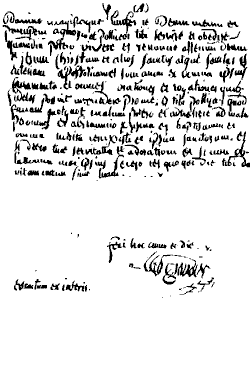
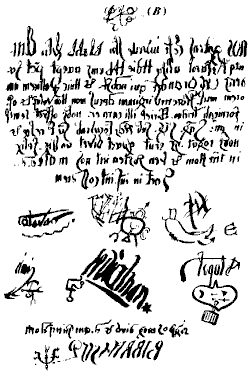
In trials for witchcraft, more conspicuously than in other situations, the location of truth is determined by the interests of the powerful. When Urbain Grandier came to trial for bewitching the nuns, on July 8, 1634, the decision was virtually a foregone conclusion. A large panel of powerful judges was appointed, all of them coming from the Catholic-occupied crescent that lay a few miles to the east of Loudun, encircling it on three sides. The hostility of the townsfolk to this "foreign" tribunal was impotent in the face of Richelieu's power. The case was prepared by Laubardemont, and every judge would have known who stood behind him. Even the pamphlets that circulated on Grandier's behalf only hastened him to his death. The meetings of his supporters are declared illegal and branded as Huguenot rebellion.
There is a surviving letter from Urbain Grandier to Louis XIII, protesting his innocence and asking for doctors of the Sorbonne to be appointed as independent investigators. Unlike his father, Henri IV, who only converted to Catholicism when he became King, Louis was notably pious, indeed he was probably the only truly faithful Catholic among all the Bourbon kings of France, so he was no more likely to intervene on behalf of a libertine and sorceror than he was to offend Cardinal Richelieu. On August 8, in Paris, two men, one of them a priest, were condemned to death for sorcerous practices aimed at Cardinal Richelieu. A royal intervention in Grandier's favour was not a likely option.
On August 18, 1634, the sentence was pronounced: "We have
ordered and do order the said Urbain Grandier duly tried and convicted
of the crime of magic, maleficia, and of causing demoniacal possession
of several Ursuline nuns of this town of Loudun, as well as of other secular
women, together with other charges and crimes resulting therefrom.
"For reparation of which,
we have condemned and do condemn the said Grandier to make honourable amend,
his head bare, a rope round his neck, holding in his hand a burning pitch
firebrand weighing two pounds, before the principal door of the church
of St. Pierre-du-Marché, and before that of St. Ursula of this town.
There on his knees, to ask pardon of God, the King, and the law; this done,
he is to be taken to the public square of St. Croix, and fastened to a
stake on a scaffold, which shall be erected on the said place for this
purpose, and there to be burned alive, with the pacts and magic figures
remaining with the clerk of the court, together with the book written by
his hand, composed against the celibacy of priests, and his ashes scattered
to the wind.
"We have ordered
and so do order that each and every article of his moveable property be
acquired and confiscated by the King; the sum of 500 livres first being
taken for buying a bronze plaque on which will be engraved the abstract
of this present trial, to be set up in a prominent spot in the said church
of the Ursulines, to remain there for all eternity. And before proceeding
to the execution of the present sentence, we order the said Grandier to
be submitted to the first and last degrees of torture, concerning his accomplices."
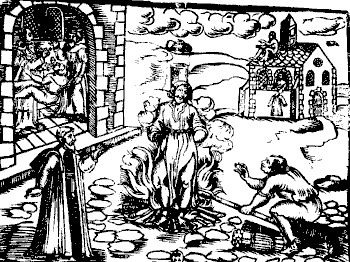

Following torture with the Spanish boots, which crushed his legs to a pulp, Grandier was dragged to his execution the same day. Every time he called on God to aid him, his torturers "rebuked him, since on that same morning we were very certain that he was a magician, and on that basis, we knew very well that when he spoke of God favourably he meant to speak of the Devil..." According to the royal notary's account, written the next day, Grandier begged the royal commissioner for the case, Laubardemont, not to have him burned alive, "for fear lest he fall into despair." This was refused, on the grounds that Grandier continued obstinate in his refusal to confess his guilt. To the end, Grandier professed his faith in God and his belief that he was on his way to heaven.
The Recollect exorcist who accompanied Grandier to the pyre, Father Lactance, exorcized the wood lest the Devil hinder its burning, refused the kiss of peace to Grandier, and put the flame to the pyre himself. He died shortly afterwards, doubtless exhausted by his heroic struggles with the demons.
However, some of the demons proved obstinate and the spiritual struggle continued long after the execution of Urbain Grandier. The nuns continued to go into convulsions, to utter profanities in strange voices, and to be observed by distinguished visitors. Even less fortunately, some of the bold exorcists succumbed to the dark forces with which they wrestled. First to fall was Father Tranquille, who had been the most intransigent of the exorcists before the trial. According to Laubardemont, writing to Richelieu, "His body is agitated, without pain, in a most prodigious fashion." The King and the Cardinal despatched the Jesuit mystic, Jean-Joseph Surin, to replace Fathers Tranquille and Lactance, late in 1634. In July 1635, the Minim father and mathematician, Marin Mersenne, exchanged letters with the gentleman-scholar Nicolas-Claude Fabri de Peiresc on the subject of Surin, "himself possessed or obsessed, as is shown by his letters." Father Vitelleschi, the superior general of the Order in Rome, wrote in August 1636, "They say that for some time he has believed himself possessed by the Word Incarnate as much as by the demon; that consequently he holds the Word to be at the origin of his speech and gestures, just as he holds the evil spirit to be the source of his obsessional movements."
The death of Grandier became the stuff of legend, being held up as an example of bravery by Huguenots and sceptics, but applauded by the more loyal supporters of Richelieu, whose vengefulness was widely blamed for Grandier's death. During the Enlightenment, this case was held against the French Catholic Church, which continued to conduct exorcisms, as a demonstration of Catholic oppression and bigotry.
 Representing
Loudun
Representing
Loudun
Vanessa Redgrave as Jeanne des Anges, in The Devils
The events that led up to the trial and execution of Urbain Grandier have exerted a fascination on the literary and artistic imagination, including that of Alexandre Dumas père. Most famous today are the films, Jerzy Kawalerowicz's Mère Jeanne des Anges (1960) and Ken Russell's sensationalized The Devils (1971). The former, which won a prize at the Cannes Film Festival, was condemned as blasphemous by Pope John XXIII. The latter, starring Oliver Reed and Vanessa Redgrave, is also notable for the production design by Derek Jarman and the original music by Peter Maxwell Davies.
Aldous Huxley, The Devils of Loudun (1952) several copies BF 1517 .F5 H8
John R.Whiting, The Devils, a play (1962) PR 6045.H245 D4 1962
Krzysztof Penderecki, The Devils of Loudun, opera
in three acts (1969)
Music Collection (2nd Floor) M 1500 .P38 T52
Bibliography of the Loudun events
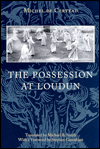
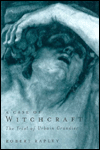
Most of the pamphlet literature that appeared on the
case is not accessible at ND, and I know of no modern collection of primary
material dealing just with Loudun. However, we do have a couple of
relevant items. Undoubtedly, the best secondary account is that of
the late Michel de Certeau, a major French theorist. As a former
Jesuit, he writes sympathetically about both Grandier and Surin.
As a psychotherapist and historian, he deals far more carefully with the
psychological condition of the afflicted women than most historians of
witchcraft have done. Robert Rapley's book is a serviceable narrative,
rather than a critical analysis. Mandrou's 1980 account remains worth
reading.
A relation of the deuill Balams departure out of the
body of the Mother-Prioresse of the Vrsuline nuns of Loudun...Faithfully
translated out of the French copie, with some observations for the better
illustration of the pageant (London, 1636)
(microfilm: Early English books, 1475-1640; reel 823,
no.1)
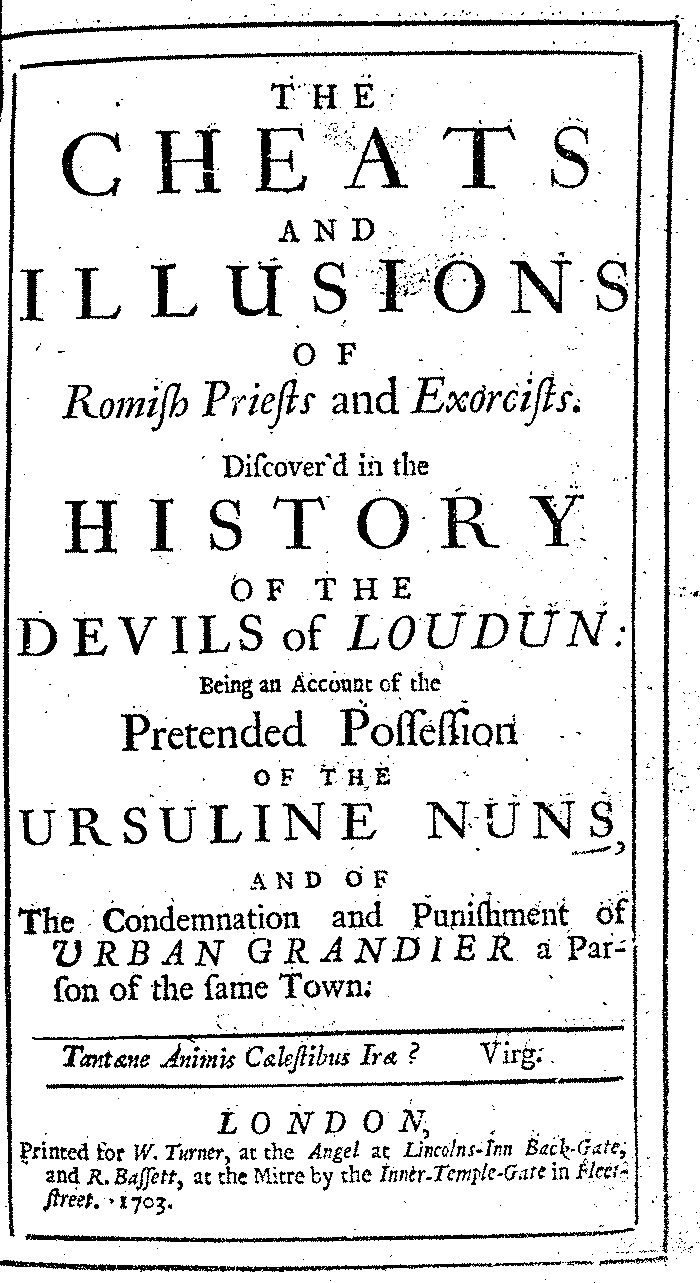 [Nicolas
Aubin, Histoire des diables de Loudun, 1693]
[Nicolas
Aubin, Histoire des diables de Loudun, 1693]
The cheats and illusions of Romish priests and exorcists.
Discover'd in the history of the devils of Loudun: being an account of
the pretended possession of the Ursuline nuns, and of the Condemnation
and punishment of Urban Grandier a parson of the same town (London,
1703)
(microfilm: The Eighteenth Century; reel 2755, no. 4).
"Des Niau" (i.e. Nicolas Aubin), The History of the
Devils of Loudun (1693, repr. 1887-88.)
Special Collections, Rare Books BF 1517 .F5 D45 1887
Michel de Certeau, La Possession de Loudun (1980)
BF 1517.F5 C47 1980
trans. as The Possession at Loudun
(2000) BF 1517.F5 C4713 2000 (U.of Chicago Press pbk.)
Robert Rapley, A Case of Witchcraft : the trial of Urbain Grandier (1998) KJV 130.G73 R36 1998
J. Lough and D.E.L. Crane, "Thomas Killigrew and the possessed nuns of Loudun: The text of a letter of 1635", Durham University Journal 78 (1986) 259-268 AS 122 .D934 A1
J.Viard, "Le procès d'Urbain Grandier: Note critique sur le procèdure et sur la culpabilité", in J. Imbert, ed., Quelques Procès Criminels des XVIIe et XVIIIe siècles (1964) pp. 45-75 HV 6967 .I4
Thérèse Griguer, "Historiographie et médecine : À propos de Jeanne des Anges et de la possession de Loudun", Annales de Bretagne 99 (1992) 155-63 DC 611.B841 A4
Background bibliography
The events of Loudun need to be set into the context of previous French possession and witchcraft cases, and into the bitterly divided religious situation of France during and after the Wars of Religion. The latter comprises too large a historiographical literature to be listed here, although a work on a slightly earlier period might prove especially useful: Mark Greengrass, France in the Age of Henri IV : the struggle for stability (1995) DC 122 .G73 1995 See also his review essay, Mark Greengrass, "Before the Edict of Nantes", The Journal of Ecclesiastical History 49 (1998) 494-498 [PDF file]
Marianne Closson, L'Imaginaire Démoniaque en France, (1550-1650): genèse de la littérature fantastique (2000) PQ 83 .C56 2000
Jonathan L. Pearl, The Crime of Crimes: demonology
and politics in France, 1560-1620 (1999)
BF 1517 .F5 P43
Jonathan L. Pearl, " 'A school for the rebel soul': Politics and demonic possession in France", Historical Reflections 16 (1989) 286-306 D 1.H37
Jonathan L. Pearl, "Demons and politics in France, 1560-1630", Historical Reflections 12 (1985) 241-251 D 1.H37
Jonathan L. Pearl, "The Mersenne-Villiers correspondence on demonic possession", Proceedings of the Annual Meeting of the Western Society for French History 10 (1982) 118-125 DC 1.W48a
Julien Maunoir, Miracles et Sabbats: journal du Père Maunoir : missions en Bretagne 1631-1650 (1998) BF 1582.M386 1997
Irena Dorota Backus, Le Miracle de Laon : le déraisonnable, le raisonnable, l'apocalyptique et le politique (1994) BF 1517.F5 B33 1994
D.P. Walker, Unclean Spirits: possession and exorcism in France and England in the late sixteenth and early seventeenth centuries (1981) BF 1517.F5 W34 1981
Robert Mandrou, ed., Possession et Sorcellerie au XVIIe siècle : textes inédits (1979) BF 1582 .P67
Francis Bavoux, Hantises et Diableries dans la Terre Abbatiale de Luxeuil; d'un procès de l'Inquisition (1956) BF 1582.B33
Robert Mandrou, Magistrats et Sorciers en France au XVIIe siècle : une analyse de psychologie historique (1980) BF 1582 .M3 1980
Anita M. Walker and Edmund H. Dickerman, "The haunted girl: possession, witchcraft and healing in sixteenth-century Louviers", Proceedings of the Annual Meeting of the Western Society for French History 23 (1996) 207-218 DC 1.W48a
Anita M. Walker and Edmund H. Dickerman, " 'A woman under the influence": A case of alleged possession in sixteenth-century France", Sixteenth Century Journal 22 (1991) 535-554 D 1.S5
Moshe Sluhovsky, "A divine apparition or demonic possession?
Female agency and church authority in demonic possession in sixteenth-century
France", Sixteenth Century Journal 27 (1996) 1039-1055
D 1.S5
Carleton S. Cunningham, "The
Devil and religious controversies of sixteenth-century France", Essays
in History 35 (1993) 33-47
Jean-Joseph Surin
Among the participants in the events at Loudun, perhaps the most notable was the great Jesuit mystic, Father Surin. Although ND Library does not have his writings on the affair, his correspondence contains references to the events and his involvement, and his religious thought is an important context for Catholic responses to the affair.
Stanislas Breton, Deux Mystiques de l'Excès
: J.-J. Surin et Maître Eckhart (1985)
BV 5095 .E3 B74 1985
Jean-Joseph Surin, Correspondance, ed. Michel de Certeau (1966) BX 4705.Su77 A3c
Jean-Joseph Surin, Guide Spirituel pour la Perfection (1963) BX 2350.5.S961
Jean Joseph Surin, Poésies Spirituelles Suivies des Contrats Spirituels (1957) BR 3 .Et81 v.15
Jean-Joseph Surin, Les Fondements de la Vie Spirituelle Tirés du Livre de L'Imitation de Jésus-Christ (1930) BX 2350.7.S87 1930
Jean Joseph Surin, Spiritual Letters of Father Surin,
S.J., trans. Sister M. Christopher, S.F. (1892)
BX 4705 Su77 A3s En36
Jean-Joseph Surin, Traité Inédit de l'Amour
de Dieu (1879) BV 4817 .S61
Index